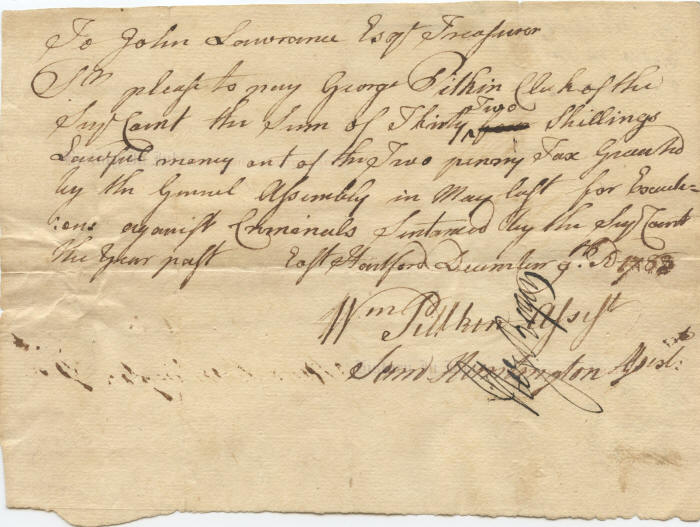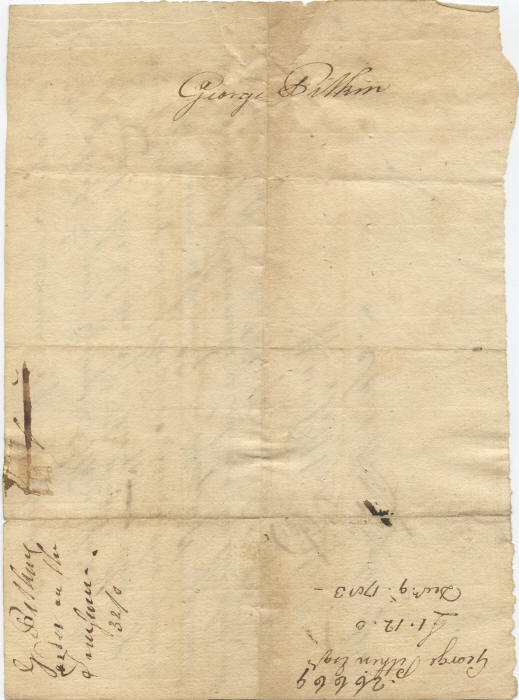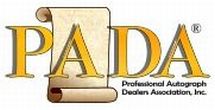


1531618
Samuel Huntington
Signer of the Declaration of Independence
William Pitkin
George Pitkin
Outstanding document with a double association to the American Revolution
Samuel Huntington, 1731–1796. Signer of the Declaration of Independence; 7th President of the Continental Congress, 1779–1781; 18th Governor of Connecticut, 1786–1796. Manuscript Document Signed, Sam Huntington Assist:, 7¾” x 5½”, East Hartford, [Connecticut], December 9, 1783. Countersigned by William Pitkin IV, 1724–1789, Wm Pittkin Assist, and endorsed by George Pitkin, 1729–1806, George Pitkin.
This document has a wonderful double association to the American Revolution. Not only is it signed by Huntington, a Signer of the Declaration of Independence, but it is also signed by William and George Pitkin, both patriots and the owners of a mill that produced gunpowder for the Continental Army.
The piece is a pay warrant to the Connecticut treasurer for the benefit of the court clerk, George Pitkin. Huntington and William Pitkin (signed as “Pittkin”), Georgeʼs brother, direct the treasurer to pay over to the clerk tax funds designated “for Executions against Criminals Sentenced by the Superior Court.” The document states, in full: “To John Lawrence Esqr Treasurer / Sir / please to pay George Pitkin Clerk of the Supr Court the Sum of Thirty Two Shillings Lawful money out of the Two penny Tax granted by the General Assembly in May last for Executions against criminals Sentenced by the Supr Court the year passt [sic] / East Hartford December 9th 1783”
Huntington and William Pitkin signed this document in their capacities as members of the Connecticut General Assembly Council of Assistants. They are listed among the state officers in 1783, the year in which this document is dated. Connecticut General Assembly, Roll of State Officers and Members of General Assembly of Connecticut from 1776 to 1881, at 35 (1881).
The Pitkins were the sons of Connecticut colonial Governor William Pitkin (1694–1769). William, who served as a colonel of the Connecticut First Regiment during the French and Indian War, was a zealous patriot who joined the Sons of Liberty in 1765. He served 19 years in the Connecticut Assembly, and during most of the Revolutionary War he was a member of the Connecticut Committee of Safety. He was elected to the Continental Congress in 1784, and in 1788 he was appointed to the state convention to ratify the United States Constitution. He served 19 years as a judge of the Connecticut Superior Court, which was the colonial Supreme Court, and became Chief Justice in 1789.
George Pitkin, a lieutenant colonel, led a contingent of soldiers to join the fight in Massachusetts shortly after receiving word of the battles of Lexington and Concord in April 1775. During the Revolutionary War, he was commandant of the Fourth Regiment of minutemen and led his troops to Roxbury during the siege of Boston.
In 1775, after King George III prohibited shipments of gunpowder to the colonies, the Connecticut Assembly permitted the Pitkins to establish a gunpowder mill in order to supply powder for the Continental Army. Since all but Oswald Eveʼs Frankford Powder Mill near Philadelphia discontinued production following the French and Indian War, the Pitkinsʼ mill was the first revolutionary period powder mill in Connecticut and only the second in the American colonies. It predated Paul Revereʼs powder mill, which he established near Boston.
Huntington, the oldest son out of 10 children, read law in books that he borrowed from local lawyers and was admitted to the Connecticut bar in 1754. He practiced law in Norwich, where, ten years later, he was elected to the Connecticut Assembly. He remained a member of either the lower or upper house for 20 years. In addition, in 1773 he, too, was appointed to the Connecticut Superior Court and became its Chief Justice in 1784. He became Lieutenant Governor of Connecticut in 1785 and was elected Governor the following year.
Because Huntington vocally opposed the British Coercive Acts, in October 1775 the Connecticut Assembly named him a delegate to the Second Continental Congress, where he joined Roger Sherman and Oliver Wolcott as the colonyʼs representatives. He voted for and signed the Declaration of Independence in 1776 and the subsequent Articles of Confederation in 1777. He became President of the Continental Congress in 1779 when John Jay was appointed the American minister to Spain.
This document is in the hand of George Pitkin, who has signed it with an endorsement on the back. Huntington and William Pitkin have signed in dark brown ink. The ink has transferred in the left blank area, mirroring Huntingtonʼs signature, from where the document was folded before the ink was completely dry—thus, in a sense, giving the document a second, partial Huntington signature. The piece has intersecting folds, one of which affects Huntingtonʼs signature, and the signatures of both Huntington and William Pitkin have been cancelled by a vertical signature. There are contemporary docketing notes in blank areas on the back as well, and the bottom portion of the paper has been slightly irregularly removed. Overall the piece is in fine condition.
The document comes with a black-and-white photographic reproduction of a painting of Huntington that is suitable for framing.
Unframed.
_____________
This item has been sold, but
click here to see other American History items
that we are offering.



